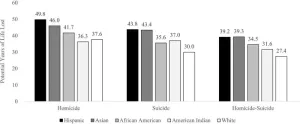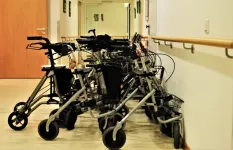(Press-News.org) Research Highlights:
Although giving blood thinners along with clot-busting medication may help in treating heart attacks, it did not improve 90-day outcomes in people with clot-caused strokes.
Enrollment in a large clinical trial, which had been planned to include more than 1,200 patients with ischemic stroke (clot-caused stroke), was halted after an independent data and safety monitoring board found no indication of benefit among the first 500 patients.
The data analysis for the 500 enrolled participants found giving blood thinners along with clot-busting medication did not increase the risk of bleeding into the brain.
Embargoed until 12:14 p.m. MT/2:14 p.m. ET Wednesday, Feb. 7, 2024
PHOENIX, Feb. 7, 2024 — Giving blood thinners in addition to clot-busting medications to people with ischemic strokes (clot-caused strokes) did not improve their outcomes 90 days later, according to preliminary late-breaking science presented today at the American Stroke Association’s International Stroke Conference 2024. The meeting, held in person in Phoenix, Feb. 7 - 9, 2024, is a world premier meeting for researchers and clinicians dedicated to the science of stroke and brain health.
These results are from the MOST (Multi-Arm Optimization of Stroke Thrombolysis) trial. MOST is a 57-center U.S. trial that was halted after an independent data and safety board analyzed results on the first 500 patients out of a planned 1,200 participants and determined it highly unlikely that a benefit would be found if the research was completed. The study was looking for improvement in functional outcomes at 90 days.
“When we began the trial, we believed the medications would improve outcomes, so we were surprised with the negative results. However, we designed the trial to allow us to efficiently answer the question for two blood-thinning medications in one trial. We have definitely done that and are pleased with the ability to answer this question,” said Opeolu M. Adeoye, M.D., M.S., lead author of the study and BJC HealthCare Distinguished Professor of Emergency Medicine and chair of the department of emergency medicine at Washington University School of Medicine in St. Louis, Missouri.
“A lot of our approaches in stroke treatment were learned from how we treat heart attacks. In previous trials, we first tested to make sure these medications were safe for use in stroke and then launched MOST to confirm their safety and test whether they would work to improve functional outcomes and reduce disability after stroke,” Adeoye said.
The MOST trial enrolled adults with ischemic stroke severe enough that rehabilitation would likely be needed. All participants received a standard clot-busting medication to dissolve the clot (thrombolysis) within three hours of stroke onset. Participants were then randomized to one of three groups for additional treatment: one group received the blood thinner argatroban within 75 minutes of the clot-busting medication, followed by a 12-hour infusion of argatroban. A second group received an initial dose of the blood thinner eptifibatide within 75 minutes of the clot-busting medication, followed by a 2-hour infusion of eptifibatide and a 10-hour infusion of saline placebo. The control group received a clot buster and a placebo treatment (a 12-hour infusion of intravenous saline solution containing neither of the blood-thinning medications).
The primary outcome was the study participant’s level of physical function at 90 days after ischemic stroke. Physical function levels were assessed using the modified Rankin score, or mRS, a 6-point disability scale. The videotaped assessment was judged by an independent neurologist reviewer who was not aware of which treatment patients had received. The mRS score was translated into a utility-weighted mRS, using validated ratings of functional outcomes by patients and physicians, resulting in a 0 to 10-point scale in which a higher score means a greater benefit from the treatment. The interim analysis was planned at the start of the study and scheduled to take place after 500 patients were enrolled. In addition, a data safety and monitoring board (DSMB) reviewed safety data after every 30 patients enrolled, looking particularly for occurrences of bleeding in the brain.
In the 514 patients enrolled prior to the trial being halted by the DSMB in July 2023, the analysis found:
The two blood thinners used did not significantly increase the risk of bleeding into the brain.
However, neither of the two blood thinners improved outcomes in the stroke survivors. On the 0 to 10 utility-weighted mRS scale, patients receiving placebo averaged 6.8, those receiving argatroban averaged 5.2, and those receiving eptifibatide averaged 6.3. (Types of disability will vary, however, people with a utility-weighted mRS scale of 6 are expected to have difficulty performing activities of daily living without assistance or support.)
Study details and background:
The three-arm study was conducted at 57 hospitals in the United States between October 2019 and July 2023.
Participants all had ischemic (clot-caused) stroke that rated a 6 or higher on the National Institutes of Health Stroke Severity Scale and considered a moderately severe stroke.
514 adults were enrolled in the trial before it was halted; participants were an average age of 68; about 50% were women; and about 25% identified as Black adults.
Participants were treated within three hours after the onset of stroke symptoms (or the last time seen well) using the standard-of-care approach of thrombolysis (delivering clot-busting medications to dissolve the clot).
In addition, 44% of the patients across all three groups were treated with interventional removal of their clots called thrombectomy.
At the time of enrollment, participants were randomized to receive a blood thinner or placebo within 75 minutes of thrombolysis: 59 received argatroban; 228 received eptifibatide; and 227 received placebo.
The primary safety measure was the occurrence of bleeding in the brain (symptomatic intracranial hemorrhage) within 36 hours of receiving one of the two blood thinners. Safety measures were analyzed by the study’s DSMB after every 30 patients were enrolled.
Medical professionals providing care were aware of whether a blood thinner or placebo were given to each patient. However, neither the patients nor the professionals rating patient outcomes were aware of which patients in any group had received a blood thinner or placebo.
“In addition, we were not able to address the possible benefit of giving these or similar blood thinners directly into an artery in the area of the stroke, rather than giving the medications systemically through a vein, as done in this trial,” Adeoye said.
For patients undergoing thrombectomy (mechanical removal of a stroke-causing clot), studies are underway to determine whether delivering blood thinners into the affected artery may improve outcomes.
The study was conducted at National Institutes of Health StrokeNet sites. StrokeNet was created to conduct small and large clinical trials and research studies to advance acute stroke treatment, stroke prevention and recovery and rehabilitation after a stroke across the lifespan. Other principal investigators were Andrew D. Barreto, M.D., M.S.; Joseph P. Broderick, M.D.; Colin P. Derdeyn, M.D.; Jordan Elm, Ph.D.; and James C. Grotta, M.D. The full list of authors and their disclosures are listed in the abstract.
All study authors reported funding from the National Institute of Neurological Disorders and Stroke, a division of the National Institutes of Health.
Statements and conclusions of studies that are presented at the American Heart Association’s scientific meetings are solely those of the study authors and do not necessarily reflect the Association’s policy or position. The Association makes no representation or guarantee as to their accuracy or reliability. Abstracts presented at the Association’s scientific meetings are not peer-reviewed, rather, they are curated by independent review panels and are considered based on the potential to add to the diversity of scientific issues and views discussed at the meeting. The findings are considered preliminary until published as a full manuscript in a peer-reviewed scientific journal.
The Association receives funding primarily from individuals; foundations and corporations (including pharmaceutical, device manufacturers and other companies) also make donations and fund specific Association programs and events. The Association has strict policies to prevent these relationships from influencing the science content. Revenues from pharmaceutical and biotech companies, device manufacturers and health insurance providers and the Association’s overall financial information are available here.
Additional Resources:
Multimedia is available on the right column of release link.https://newsroom.heart.org/news/blood-thinners-added-to-clot-busting-medication-did-not-improve-stroke-outcomes?preview=d5d3993e57238008ccc397494fdd6f69
After Feb. 7, view LB3 in the ASA International Stroke Conference 2024 Online Program Planner
For more news at ASA International Stroke Conference 2024, follow us on X (formerly known as Twitter) @HeartNews #ISC24
###
About the American Stroke Association
The American Stroke Association is devoted to saving people from stroke — the No. 2 cause of death in the world and a leading cause of serious disability. We team with millions of volunteers to fund innovative research, fight for stronger public health policies and provide lifesaving tools and information to prevent and treat stroke. The Dallas-based association officially launched in 1998 as a division of the American Heart Association. To learn more or to get involved, call 1-888-4STROKE or visit stroke.org. Follow us on Facebook, X.
END
Blood thinners added to clot-busting medication did not improve stroke outcomes
American Stroke Association International Stroke Conference – Late-Breaking Science Presentation LB3
2024-02-07
ELSE PRESS RELEASES FROM THIS DATE:
Reinforcing the diverse ways people access seafood can ensure healthy communities in the face of change
2024-02-07
(Santa Barbara, Calif.) — As climate change affects the oceans, coastal communities, particularly those at the front lines of ocean warming and sea level rise, are facing pressures that could threaten their access to aquatic foods.
“Climate change and other economic shocks are impacting how people access seafood, and typically households that are most reliant on seafood, such as those in Pacific Island countries, are most at risk,” said Jacob Eurich, a research associate at UC Santa Barbara’s Marine Science Institute, and a fisheries scientist at the Environmental Defense Fund. Which is why, he added, it is necessary to increase food system resilience in the area, ...
Non-white victims of lethal violence and suicide in the US die significantly younger than their white counterparts
2024-02-07
In the US, people of color who are killed by violence or die by suicide lose more potential years of life than white victims, according to a new study, which also explored factors that may contribute to these disparities. Gregory Zimmerman of Northeastern University in Boston, US, and colleagues present these findings in the open-access journal PLOS ONE on February 7, 2024.
Mounting evidence suggests that, among victims of violence in the US, the average number of potential years of life lost—how much longer the victim would have lived if they survived—is greater for people of color than for white people.
To deepen understanding, Zimmerman ...
Almost 1 in 5 Indian adults aged 60+ show signs of mild neurocognitive disorder, according to nationally representative data - more than previously recognized
2024-02-07
Almost 1 in 5 Indian adults aged 60+ show signs of mild neurocognitive disorder, according to nationally representative data - more than previously recognized
###
Article URL: https://journals.plos.org/plosone/article?id=10.1371/journal.pone.0297220
Article Title: Prevalence of DSM-5 mild and major neurocognitive disorder in India: Results from the LASI-DAD
Author Countries: USA, UK, India
Funding: This work was supported by the National Institute on Aging (R01 AG051125 (JL), R01 AG030153 (JL), U01 AG064948 (JL), R01 AG070953 (ALG)). The funders had no role in study design, ...
More biodiverse nature landscapes may better buffer against stress - but only if you notice the difference, per experiment using videos of urban woodland
2024-02-07
More biodiverse nature landscapes may better buffer against stress - but only if you notice the difference, per experiment using videos of urban woodland
###
Article URL: https://journals.plos.org/plosone/article?id=10.1371/journal.pone.0297179
Article Title: Does increasing biodiversity in an urban woodland setting promote positive emotional responses in humans? A stress recovery experiment using 360-degree videos of an urban woodland
Author Countries: UK
Funding: SF received a PhD Studentship funding from the UKRI Economic and Social Research Council, ...
UK austerity politics correlated with increased frailty in the oldest adults
2024-02-07
The period of austerity politics from 2012 to 2018 was associated with steeper increases in frailty with age compared to pre-austerity between 2002 and 2010, according to a new study published February 7th in the open-access journal PLOS ONE by Carys Pugh of the University of Edinburgh, UK, and colleagues.
Previous research has linked a stalling in life expectancy growth to austerity politics implemented in response to the 2008-2009 financial crisis. However, the mechanism through which public spending cuts are associated with decreased life expectancy ...
Psychology study unearths ways to bolster global climate awareness and climate action
2024-02-07
An international team of scientists has created a tool that can aid in increasing climate awareness and climate action globally by highlighting messaging themes shown to be effective through experimental research.
The web-based tool, and the methods undergirding its creation, appears in the journal Science Advances.
The tool stems from a study involving nearly 250 researchers that drew more than 59,000 participants from 63 countries, including Algeria, China, Denmark, Germany, Israel, Japan, New Zealand, Peru, and the United States.
“We ...
Scientists reveal why blueberries are blue
2024-02-07
Tiny external structures in the wax coating of blueberries give them their blue colour, researchers at the University of Bristol can reveal.
This applies to lots of fruits that are the same colour including damsons, sloes and juniper berries.
In the study, published today in Science Advances, researchers show why blueberries are blue despite the dark red colour of the pigments in the fruit skin. Their blue colour is instead provided by a layer of wax that surrounds the fruit which is made up of miniature structures that scatter blue and UV light. This gives blueberries their blue appearance to humans and blue-UV to birds. The chromatic blue-UV reflectance ...
McMaster and ALK researchers discover new cell that remembers allergies
2024-02-07
Researchers with McMaster University and Denmark-based pharmaceutical company ALK-Abello A/S have made a groundbreaking discovery: a new cell that remembers allergies.
The discovery gives scientists and researchers a new target in treating allergies and could lead to new therapeutics. The research, published in Science Translational Medicine on Feb. 7, 2024, coins the brand-new cell as a type-2 memory B cell (MBC2).
“We’ve discovered a type of memory B cell that had unique characteristics and a unique gene ...
England’s oldest became frailer during austerity, study suggests
2024-02-07
The speed at which England’s oldest adults became frailer accelerated during the UK Government’s era of austerity politics, according to a new study.
Researchers say that the rate of frailty in people aged 85 and over in England increased 50 per cent faster per year between 2012 and 2018 compared with the preceding eight years.
The impact of frailty – a decline in a person’s mental and physical resilience to illness and injury – on the oldest in society must be considered should any new austerity measures be introduced, experts warn.
The study, led by researchers from the University of Edinburgh’s ...
Exceptionally rapid tooth development and ontogenetic changes in the feeding apparatus of the Komodo dragon
2024-02-07
Tea Maho and Robert R. Reisz
University of Toronto Mississauga
Kilat, the largest living lizard at the Toronto Metro Zoo, like other members of his species (Varanus komodoensis), truly deserves to be called the Komodo Dragon! Its impressive size and the way it looks at you and tracks your every move makes you realize that it is an apex predator, not unlike a ferocious theropod dinosaur. So, it is not surprising when you look around at his enclosure to find that there are shed teeth sparkling on the ground, a common find when ...
LAST 30 PRESS RELEASES:
S-species-stimulated deep reconstruction of ultra-homogeneous CuS nanosheets for efficient HMF electrooxidation
Mechanical and corrosion behavior of additively manufactured NiTi shape memory alloys
New discovery rewrites the rules of antigen presentation
Researchers achieve chain-length control of fatty acid biosynthesis in yeast
Water interactions in molecular sieve catalysis: Framework evolution and reaction modulation
Shark biology breakthrough: Study tracks tiger sharks to Maui mating hub
Mysterious iron ‘bar’ discovered in famous nebula
World-first tool reduces harmful engagement with AI-generated explicit images
Learning about public consensus on climate change does little to boost people’s support for action, study shows
Sylvester Cancer Tip Sheet for January 2026
The Global Ocean Ship-Based Hydrographic Investigations Program (GO-SHIP) receives the Ocean Observing Team Award
Elva Escobar Briones selected for The Oceanography Society Mentoring Award
Why a life-threatening sedative is being prescribed more often for seniors
Findings suggest that certain medications for Type 2 diabetes reduce risk of dementia
UC Riverside scientists win 2025 Buchalter Cosmology Prize
SETI Institute opens call for nominations for the 2026 Tarter Award
Novel theranostic model shows curative potential for gastric and pancreatic tumors
How beige fat keeps blood pressure in check
Fossils reveal ‘latitudinal traps’ that increased extinction risk for marine species
Review: The opportunities and risks of AI in mental health research and care
New map reveals features of Antarctic’s ice-covered landscape
Beige fat promotes healthy vascular function and blood pressure in mice
Chronic low-dose pesticide exposure reduces the life span of wild lake fish, China-based study shows
Tiny earthquakes reveal hidden faults under Northern California
Long-term pesticide exposure accelerates aging and shortens lifespan in fish
Professor Tae-Woo Lee's research group develops groundbreaking perovskite display technology demonstrating the highest efficiency and industry-level operational lifetime
The “broker” family helps tidy up the cell
Ecology: Mummified cheetahs discovery gives hope for species’ Arabic reintroduction
Researchers survey the ADHD coaching boom
Air pollution and cardiac remodeling and function in patients with breast cancer
[Press-News.org] Blood thinners added to clot-busting medication did not improve stroke outcomesAmerican Stroke Association International Stroke Conference – Late-Breaking Science Presentation LB3






